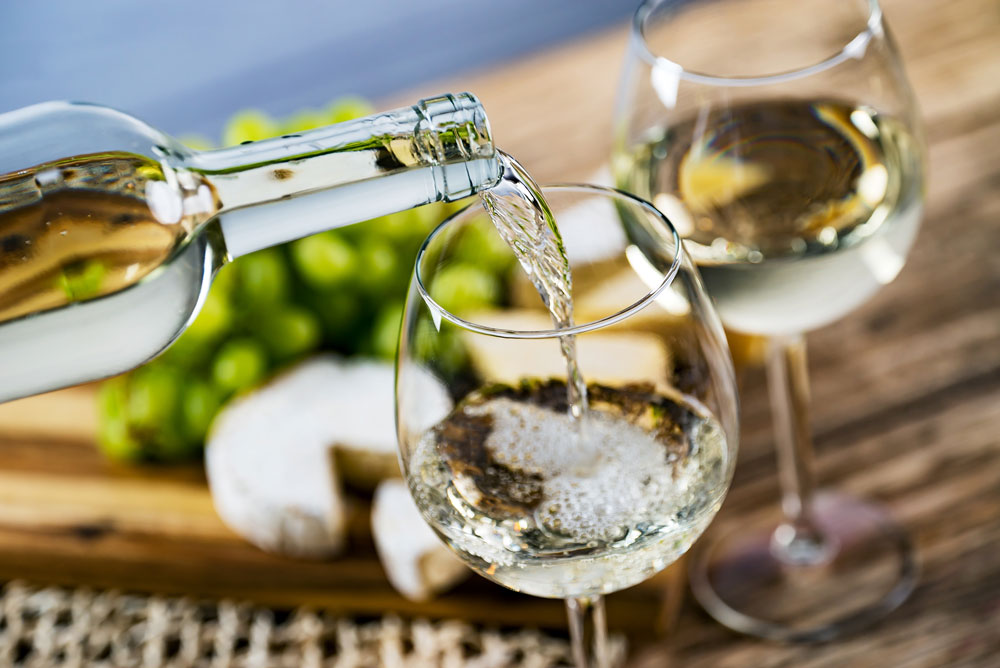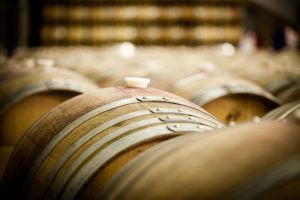When it comes to Chardonnay, two words typically come to mind for many Americans – “oaky” and “buttery.” Where do these descriptions come from and what do they mean? Even Chardonnay lovers would be hard-pressed to describe these terms, except that they like “oaky, buttery” wines. If you’ve been shopping for Chardonnay in the last ten years, you’ve certainly come across a different type of wine. Often described as “unoaked” or “stainless.” Devotees of this style are passionate and often very dismissive of oaky, buttery Chardonnays. Why? What do these people have against old-fashioned California Chardonnay? This post will delve into these questions and help to illuminate the dual personality of one of the world’s favorite grapes: Chardonnay.

What is Chardonnay?
Chardonnay is the name of a grape varietal that most likely originated in the Burgundy region of France. White wines from Burgundy are still almost certainly made from 100% Chardonnay, even if that fact is not stated on the label.
Why is Chardonnay often described as “oaky and buttery?”
Early American winemakers found themselves in a relatively unique position. Whereas European winemakers worked in an environment steeped in history and tradition, Americans found themselves planting vineyards in places where European grapes had never been grown. This lack of historical context led to innovation. At some point, American Chardonnay producers began fermenting and aging their wines in oak barrels – a practice typical for red wine, but less common with white. The use of new oak yielded flavors of vanilla, coconut, and baking spice in the wine – all characteristics normally associated with red wine.
Chardonnay left in oak barrels is also likely to undergo a process called “carbonic maceration,” wherein ambient microbes transform tart fruity compounds called “malic acids” into creamy, “buttery” lactic acids. Once again, this process was typical with red wines but not whites. In short, American Chardonnay producers treated their wines more like red wines than would have been common in Europe.
So if oaky, buttery flavors come from oak, what does unoaked Chardonnay taste like?
Chardonnay grapes are usually described as having orchard fruit flavors like apple and pear, as well as citrus and tropical notes, like banana and pineapple. Generally, Chardonnay is fuller bodied than other white wines and sometimes show flavors like toasted nuts and caramel. Unoaked Chardonnay might feel lighter and will seem tart, and fruity compared with oaked Chardonnay though both types are usually dry.
Why does it seem like there so many unoaked Chardonnays out there right now?
The simple answer is fashion. Oaky Chardonnays became fashionable in the US starting in the 1980s and remained so for several decades. Currently, unoaked wines are seeing a resurgence both for reds and whites. Lean, dry, European wines are increasing in popularity and have crossover appeal for those who enjoy white wines like Pinot Grigio and Sauvignon Blanc.
Are oaked or unoaked Chardonnays better?
Both styles are delicious and the more examples of each become available, the more variety we can all have in our wine drinking. I personally like oaky Chardonnay for drinking by itself and unoaked Chardonnay for dinner – though there are always exceptions. Now that you know how important oak is in Chardonnay production and the effect it has on the wine, you should be better prepared to shop for and enjoy this delightful grape.





